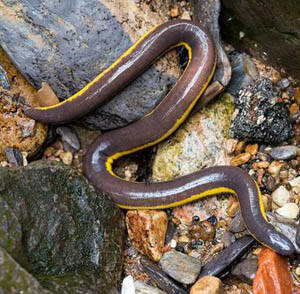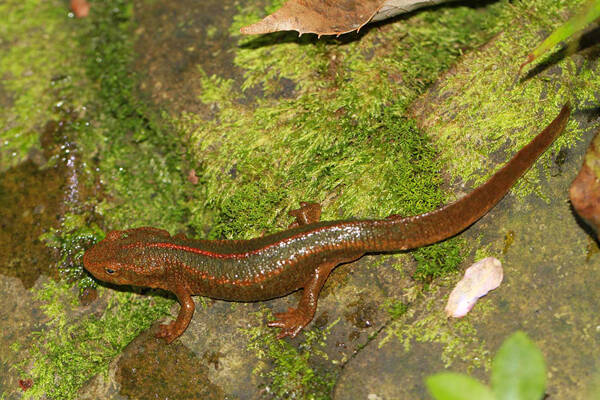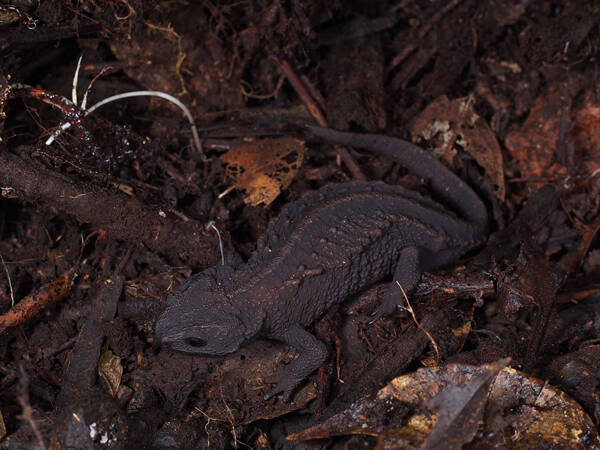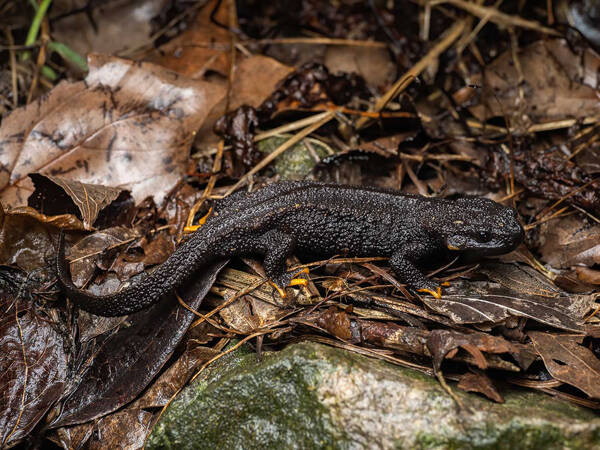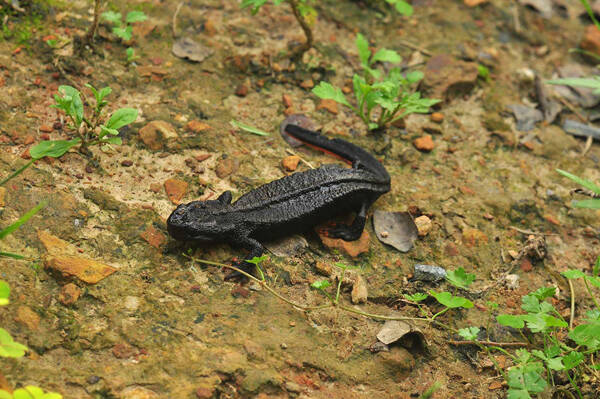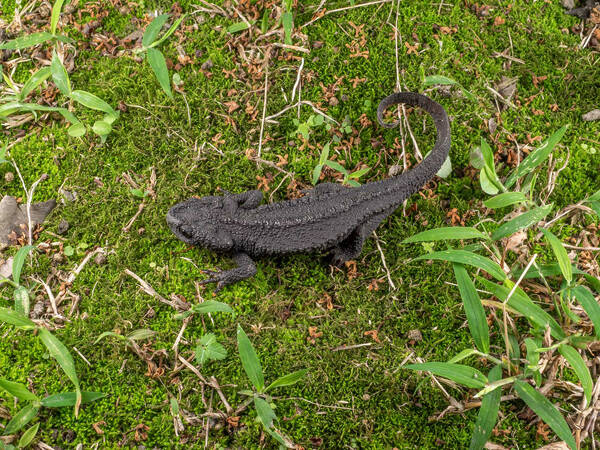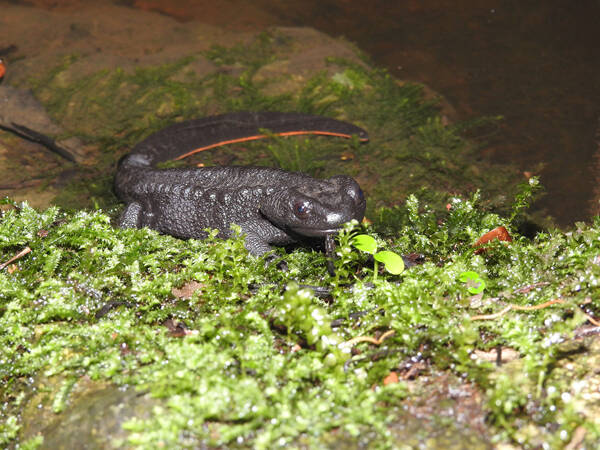Paramesotriton chinensis
IUCN
LCBasic Information
Scientific classification
- name:Paramesotriton chinensis
- Scientific Name:Paramesotriton chinensis,Chinese Warty Newt,Water monk, baby salamander, bone-dissolving pill
- Outline:Urodela
- Family:Caudata Salamandridae Salamander
Vital signs
- length:126-151mm
- Weight:
- lifetime:
Feature
Possessing distinct characteristics of cold-blooded animals
Distribution and Habitat
This species is endemic to China and is distributed in Anhui (Shexian, Huangshan, Xiuning, Jiuhuashan), Zhejiang (Ningbo, Tiantai, Jinyun, Longquan, Suichang, etc.), Fujian (Wuyishan).
The sub-adults of this newt are commonly found in hilly and mountainous areas. They live on land. During the breeding season, the adult newts live in relatively wide streams at an altitude of 30-850m in hilly and mountainous areas. The water flow is relatively slow, and there are many small stones and mud in the streams.
Appearance
The head is flat, longer than it is wide, and the length of the snout is almost the same as the diameter of the eye; the back of the head is covered with large and small warts, there are glandular ridges on the sides of the head, and a V-shaped ridge on the occipital part connected to the median ridge on the back of the body. There are no rib grooves on the dorsal side of the body, which are large and dense and arranged in vertical rows; there are no neck folds, and there are horizontal constrictions on the ventral side of the body; the whole body is brown-black or yellowish brown; the color of the spots varies.
Details
The Chinese newt lives in slow-flowing mountain streams or wet grass and gravel bottoms covered with rotten leaves beside the stream. Sometimes it swims to the surface to breathe air, and often lands in the grass in rainy weather. It mainly preys on small animals such as water earthworms, click beetles, leaf beetles, weevils, snails, and snails, and has some effect on eliminating agricultural and forestry pests. Among them, snails are the main food. During hibernation, adults lurk under deep water rocks. The newt is fertilized internally, and the male courtship process recorded indoors has fan-tail behavior. Single eggs adhere to the stems and leaves of aquatic plants.
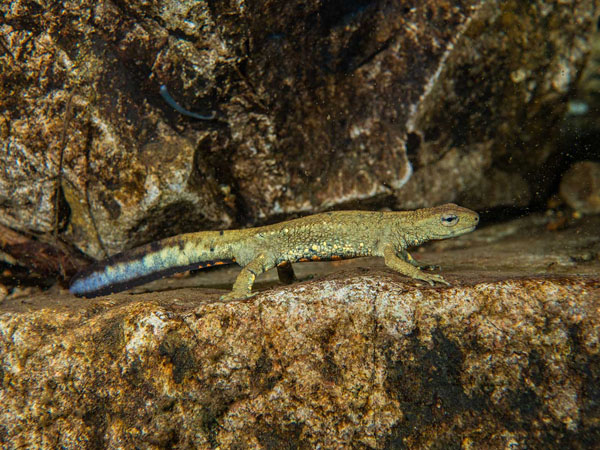
The best temperature for Chinese newts to move outside the cave is 5-10℃; when the water temperature is above 10℃, they move less outside the cave; when the water temperature is below 2℃, the number of activities outside the cave is almost zero. Chinese newts have no obvious hibernation state. When the temperature is too low, they are frozen and paralyzed; when the temperature rises, they immediately resume activity. For example, when the temperature is 0℃, Chinese newts sleep with their eyes closed and do not move when stimulated. After being placed in 3℃ water, they start to move after 1.5 minutes.
The Chinese newt has the obvious characteristics of a cold-blooded animal. Its body temperature, activity and respiration change with the ambient temperature. The water temperature affects its metabolism, and its content and respiration also change. When the water temperature is high, its body temperature rises, its metabolism is strengthened; it consumes more calories and eats more; the oxidation is strengthened, and it needs more oxygen. Respiring through the skin and oral mucosa alone can no longer meet its needs, and it needs to float to the surface and breathe oxygen in the air through its nose. The higher the temperature, the less oxygen dissolved in the water, and the more times it floats to the surface.
The newt is fertilized internally, and the male courtship process recorded indoors has fanning behavior. The breeding season is from April to June; the eggs are attached to the stems and leaves of aquatic plants; a young newt with its external gills gone, is about 48 mm long. The number of eggs laid is about 200. Due to the decline in environmental quality and the destruction of habitats, it is difficult to grow and reproduce, and the amount of resources is decreasing.
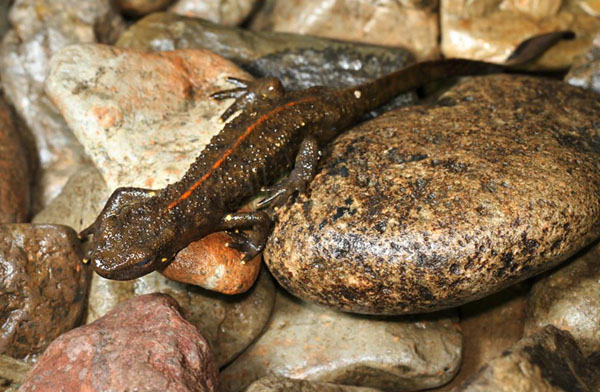
Chinese sacroiliac newt is an agricultural insect that is easy to breed and raise. It is a good material for studying animal embryonic development and amphibian evolution. We should make full use of the power of media at all levels to vigorously promote knowledge on protecting the environment and wildlife and enhance the concept of the rule of law. It is recommended that Chinese sacroiliac newt be listed as a national Class II key protected aquatic wildlife. Strengthen fishery management, abide by the law, and punish violations. Protect its habitat, prohibit hunting, and implement place of origin protection.
The Chinese newt preys on a variety of insects (including aquatic insects) and larvae, such as moths, ants, click beetles, leaf beetles, weevils and other pests. It also eats earthworms, snails, etc., and has some effect in eliminating agricultural and forestry pests. It is reported that its beneficial coefficient is 14.8%. The newt is easy to raise and reproduce, and is a good experimental material for studying animal embryonic development and amphibian evolution. It can also be raised in zoos or homes as an ornamental animal.


